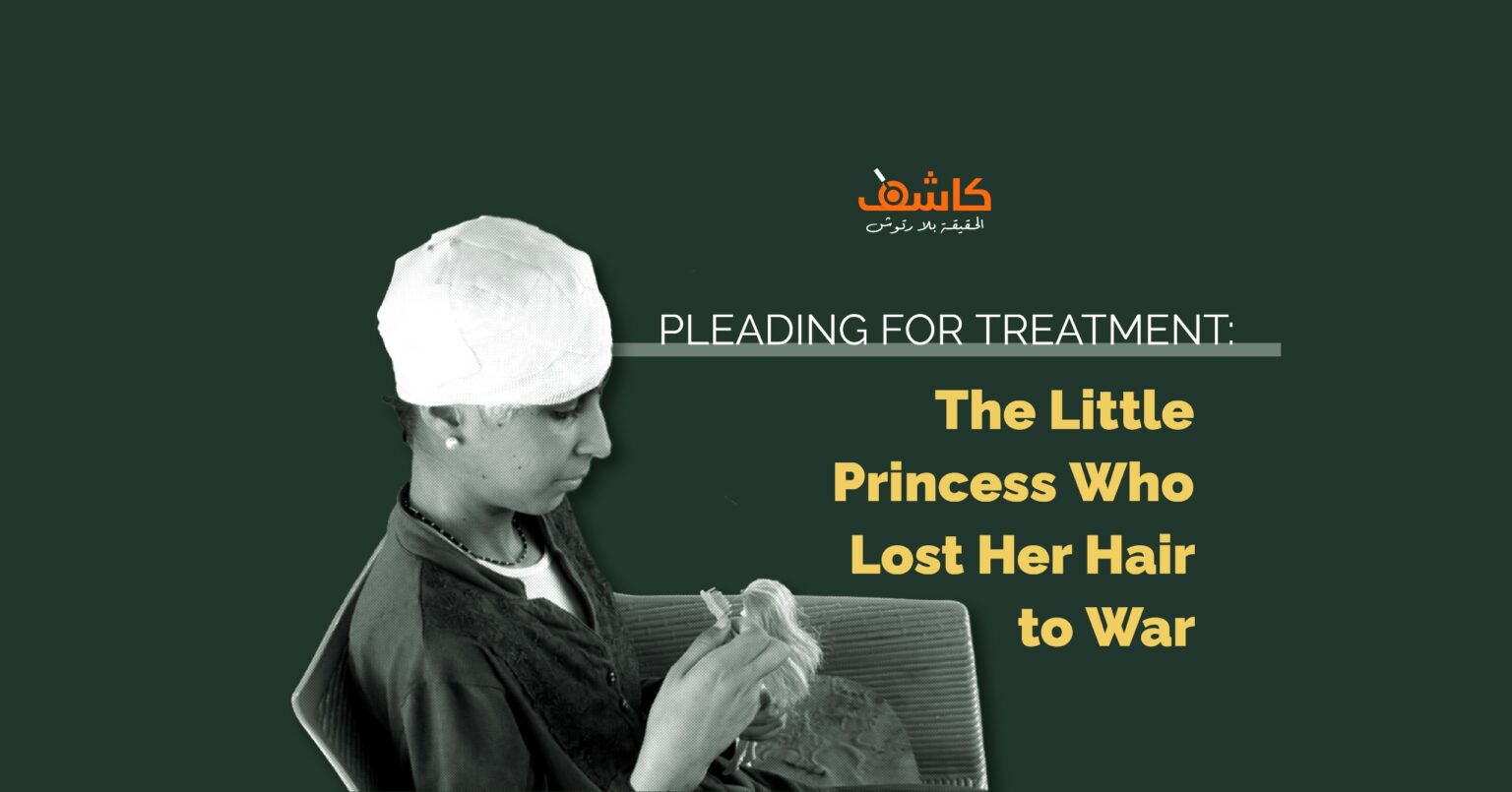Malak Farhan – Gaza
“Eid was just three days away. I was so excited to wear my new dress and decorate my long hair with bows, like a Disney princess. But the storm came early—before the wheat could ripen—and instead of tying my hair with ribbons, the bombing winds ripped the strands from my head.”
12-year-old Hala Dalheez sits in a small tent on the outskirts of al-Mawasi, west of Khan Younis, her head wrapped in a white bandage. She stares at her new reflection in a cracked mirror, silently mourning the loss of her princess-like hair—her crown stolen by war.
She was playing on a swing near her tent when an Israeli airstrike hit nearby. The explosion violently shook the ground, and in the chaos, her hair got caught in the metal swing structure, tearing away part of her scalp and leaving her unconscious from heavy bleeding.
“I heard the explosion and ran out of the tent,” recalls her father, Shukri Dalheez. “Children from the neighborhood were screaming for help. I only remember the image of Hala with her head bleeding and her hair tangled in the swing.”
Hala shares: “I woke up in the hospital surrounded by people. My head hurt badly. I reached to touch my hair, but it was gone. I panicked and kept asking, ‘Where’s my hair?!’ No one would answer until my cousin told me it got stuck in the swing and had to be cut to save me. I couldn’t stop crying.”
Infection and Lost Hope
In the first three days after her injury, doctors attempted to stitch her torn scalp back together. But severe infections and painful sores soon set in, forcing them to shave what remained of her hair to treat the wound.
“Her scalp became inflamed and infected,” her father explains. “Doctors had no choice but to remove the rest of her hair to clean and treat the area. She refused at first, but I had to convince her. It broke me.”
Despite obtaining a medical referral for treatment abroad, Hala’s situation remains unchanged. Borders are sealed, medical evacuations are halted, and her condition worsens with each passing day.
Isolation and Emotional Collapse
Since being discharged from the hospital, Hala avoids going outside or interacting with others. “Everyone who sees me asks what happened to my hair,” she says, fighting back tears. “They ask once, then again, and again. I try to cover my head with a cap, then a hoodie—but it doesn’t help.”
She adds: “I tried to accept it, but whenever my white bandage shows, I see fear in the other children’s eyes. Some are cruel and mock me, even though they’ve seen my injury before. My heart breaks, and I run back into the tent to cry.”
Though she knows it wasn’t her fault, Hala believes losing her hair meant losing her beauty. Trapped in the cycle of shame and sadness, she remains isolated, hiding in her tent and avoiding the world.
From Beautiful Memories to Harsh Reality
Gathering herself between sobs, Hala recalls happier days—standing in front of the mirror, styling her long hair before school. “There’s no school now,” she says quietly. “And I don’t have my beautiful hair anymore… My life has turned completely dark.”
She remembers going out to play or walk with her friends, escaping the heat, insects, and boredom of the tent. “But now, I’ve lost all of that—because I lost my hair.”
In a heartbreaking moment, Hala pulls off her bandage, revealing a severely scarred and nearly bald scalp. The sight is too painful to bear. The interview stops there.
Her father later adds: “She kept the strands of hair they cut in the hospital. She looks at them every day and cries. It hurts her deeply when she sees her mother brushing her sister’s hair.”
Body Image Trauma
Psychologist Dr. Mai Atiya explains that Hala’s symptoms—withdrawal, isolation, and emotional breakdowns—are signs of Body Dysmorphic Disorder (BDD) caused by trauma and sudden changes to body image.
“These cases are incredibly complex,” Dr. Atiya says. “Victims may reject themselves, and without access to proper treatment, this can lead to severe depression or even suicidal thoughts.”
She stresses the importance of support from Hala’s family and community, shielding her from verbal abuse or body-shaming. Even looks of pity or disgust can deepen her emotional wounds.
“Treatment must be both physical and psychological,” Dr. Atiya adds. “Only then can she develop coping mechanisms, defend herself from harm, and slowly regain her confidence.”
Planting Seeds of Hope
Despite her suffering, Hala imagines a hopeful future where she receives treatment and hair restoration. Her eyes brighten: “I’ll be so happy. I’ll play with my friends again.”
She continues, “I only want to go abroad for treatment and get my hair back. That’s my right as a child. I didn’t choose this war. I want to look like myself again and meet people without feeling ashamed. My father tries, but no one helps us.”
When asked what she’ll do first after recovering, she answers with a weak smile: “I’ll wear the bows I bought… and my Eid dress. I’ll visit my friends and play with them—just like before.”
